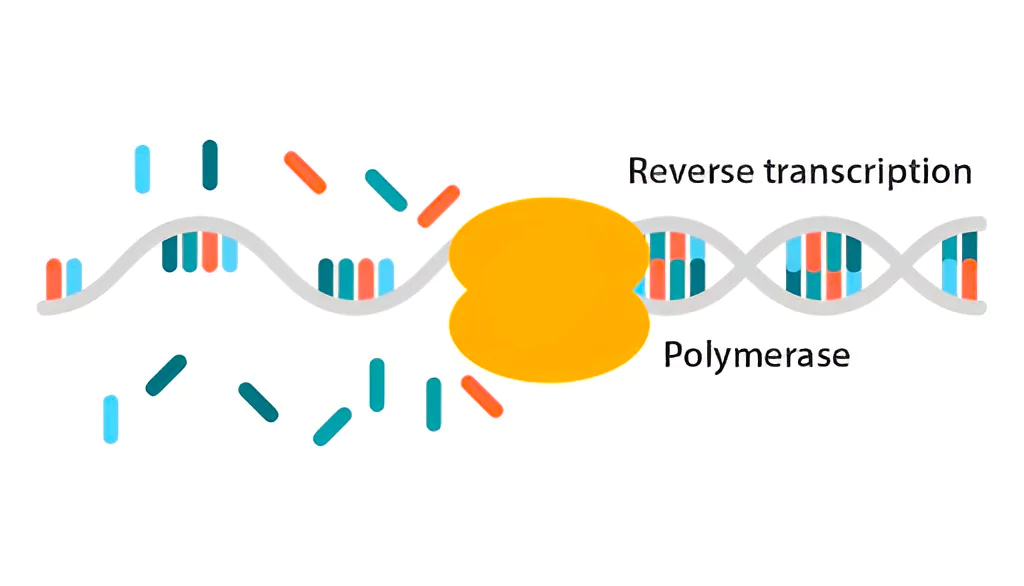The role of Reverse Transcriptase has been discovered in some recent research in bacterial defense against bacteriophages.
Reverse Transcriptase
- The Study: The researchers at Columbia University in New York, found that when the bacteria Klebsiella pneumoniae is infected by bacteriophages (viruses that infect bacteria), they use a non-coding RNA with specific structures that could bind to reverse transcriptase and instruct cells to create DNA.
- New Protein: This DNA copy has multiple copies of a gene that can create a specific protein named ‘Neo’ for “never-ending open-reading frame”.
- Finding: The protein could place the bacterial cell in a state of suspended animation and block its replication, thus stalling the replication of the invading bacteriophage as well which has the effect of stopping the infection in its tracks.
Enroll now for UPSC Online Course
About Reverse Transcriptase (RT)
- Reverse transcriptase (RNA-dependent DNA polymerase), is a DNA polymerase enzyme that transcribes single-stranded RNA into DNA.
- This enzyme is able to synthesize a double helix DNA once the RNA has been reverse transcribed in a first step into a single-strand DNA.
- Discovery: It was discovered in the labs of Howard Temin and David Baltimore in the vesicular stomatitis virus ( A Retrovirus). They found a protein called RNA polymerase, which was involved in reverse-translating RNA to DNA.
- Reverse Transcriptase is found along many eukaryotic and prokaryotic systems like telomerase, retrotransposons, retrons, and are found abundantly in the genomes of plants and animals.
- Published In: The findings were published in the journal Nature.
- Significance:
 Established Bidirectional flow of information: The discoveries showed information could flow the other way, too, with RNA giving rise to DNA.
Established Bidirectional flow of information: The discoveries showed information could flow the other way, too, with RNA giving rise to DNA.
- The prevailing belief at the time was that in all living beings, hereditary information flowed only from DNA to RNA and from RNA to protein (ie. the ‘Central Dogma’).
- Fundamental Role in Evolution of life: The discovery of reverse transcriptase activity across the different domains of life signifies the fundamental role of the enzyme in both prokaryotic and eukaryotic systems as well as a remarkable evolutionary continuity and functional versatility.
- Scope: The Reverse Transcriptase technology has a huge potential for,
- Biotechnology Applications: Innovative applications in biotechnology and medicine, especially in the context of emerging antimicrobial resistance (the ability of disease-causing microbes to resist the effects of substances designed to incapacitate or kill them)
Check Out UPSC Modules From PW Store
Bacteriophages
They are also known as phages, viruses that infect and replicate only in bacterial cells. They are ubiquitous in the environment and recognized as the earth’s most abundant biological agent.
- Structure: They consist of a nucleic acid genome encased in a shell of phage-encoded capsid proteins, which protect the genetic material and mediate its delivery into the next host cell.
- Motion: Phages are non-motile and depend upon Brownian motion to reach their targets.
- Replication Strategies: Once a bacteriophage attaches to a susceptible host, it pursues either of the 2 replication strategies ie. lytic or lysogenic.
- In Humans: Bacteriophages cannot infect and replicate in human cells, but are an important part of the human microbiome and a critical mediator of genetic exchange between pathogenic and nonpathogenic bacteria.
|
-
- New Therapeutic and Diagnostic Strategies: It could reveal novel mechanisms of genetic evolution and viral resistance, potentially leading to new therapeutic strategies and biotechnological tools.
-
Impacts
- Revolutionized research methods: The discovery revolutionized research in molecular biology, where researchers could reverse-transcribe messenger RNAs to pieces of DNA, clone that DNA into bacterial vectors, and study the function of the corresponding genes.
- Revolutionized diagnostics method: Clinicians used reverse transcriptase to convert RNA to DNA and estimate the amount of viral material in a given sample.
- Application: In the study of RNA viruses, including hepatitis B and the human immunodeficiency virus (HIV)
- Disease management: The discovery aided the management and treatment of HIV AIDS infections in the 1980s as it led to the development of antiviral agents specifically targeting the reverse transcriptase enzyme.
- Shaping the Human Genome: Retroelements in the human genome and bacterial reverse transcriptases have a common evolutionary history as well as share functional mechanisms.
- Bacterial reverse transcriptases are believed to be the precursors of their eukaryotic (human) counterparts and the first reverse transcriptase in bacteria was discovered in 1989.
- Cornerstone of Molecular Diagnostics: The RT enzyme facilitated rapid and accurate testing of the SARS COV2 virus along with genome-sequencing helped track the virus’s spread, paving the way for surveillance, better public healthcare, and vaccine development.
Check Out UPSC CSE Books From PW Store
![]() 5 Jun 2024
5 Jun 2024
 Established Bidirectional flow of information: The discoveries showed information could flow the other way, too, with RNA giving rise to DNA.
Established Bidirectional flow of information: The discoveries showed information could flow the other way, too, with RNA giving rise to DNA.
